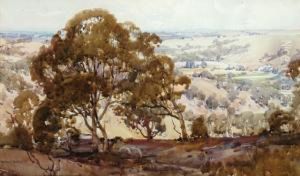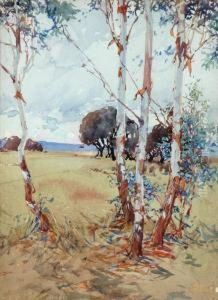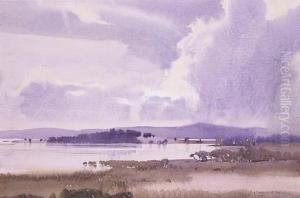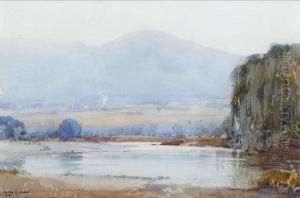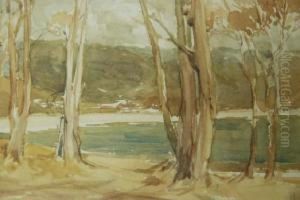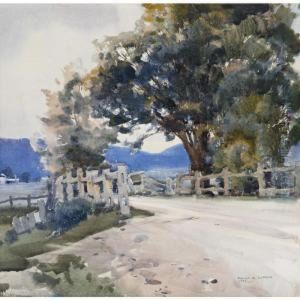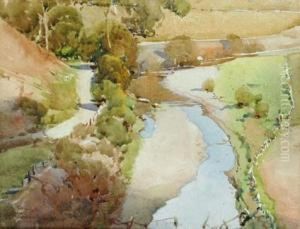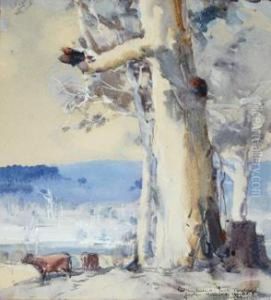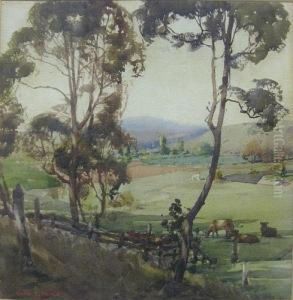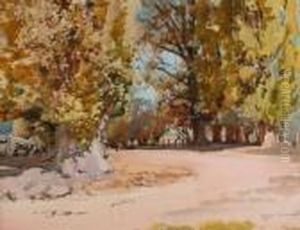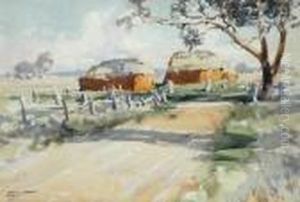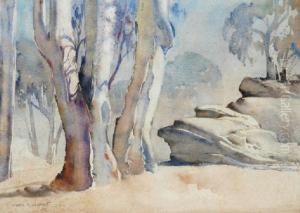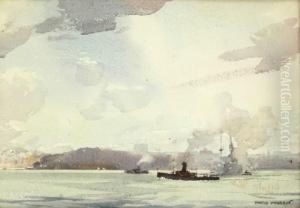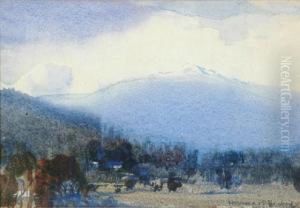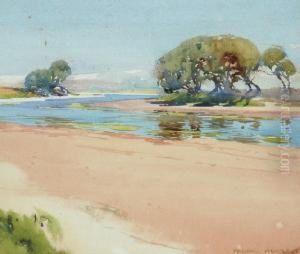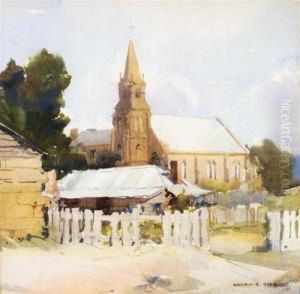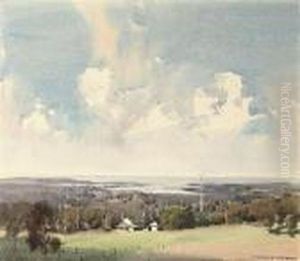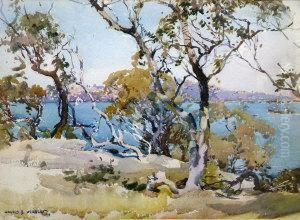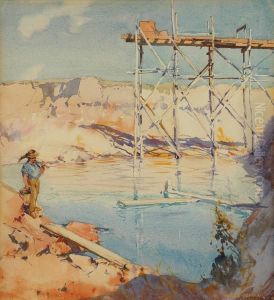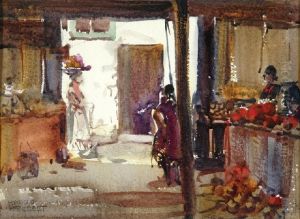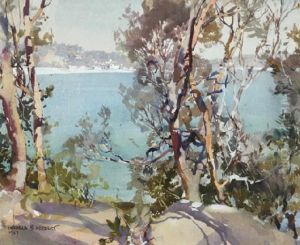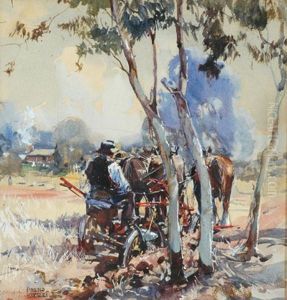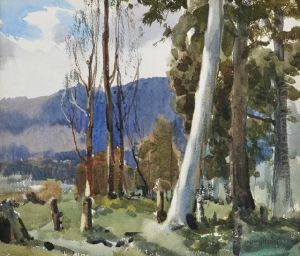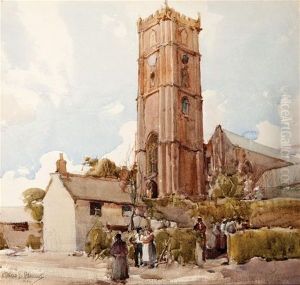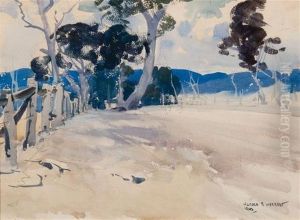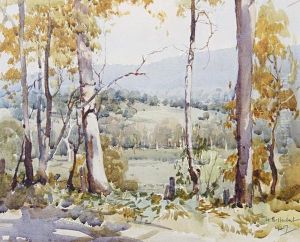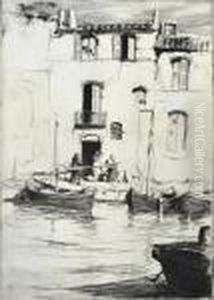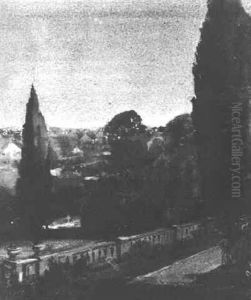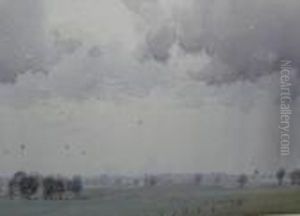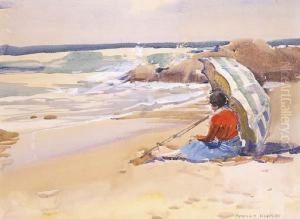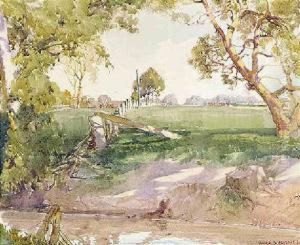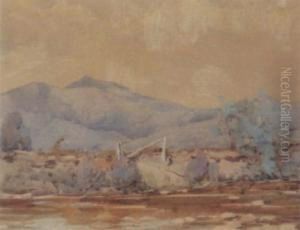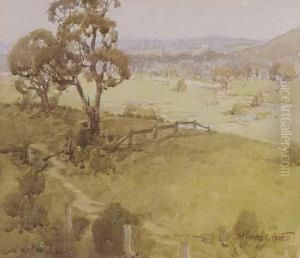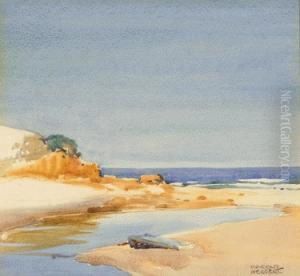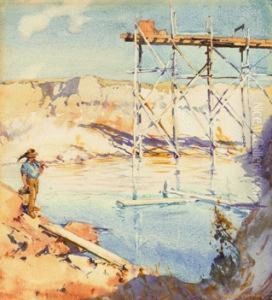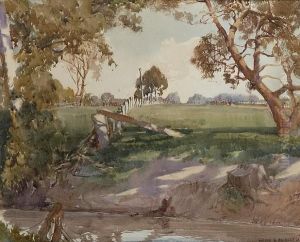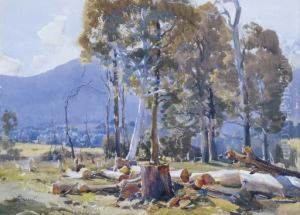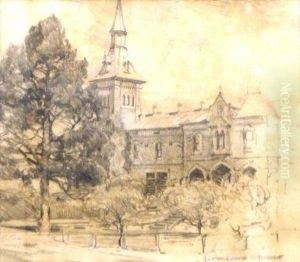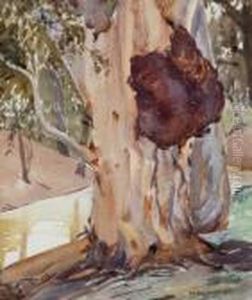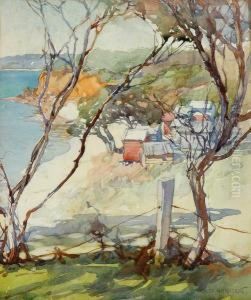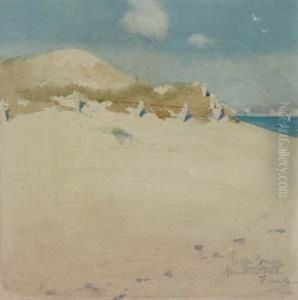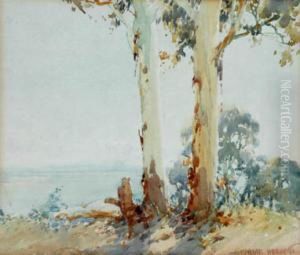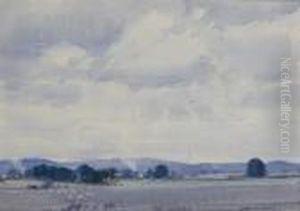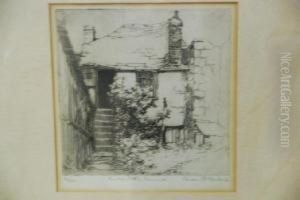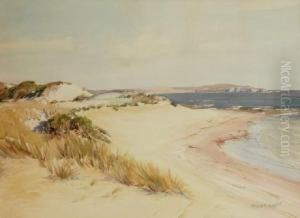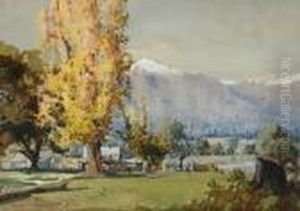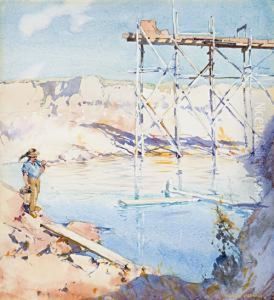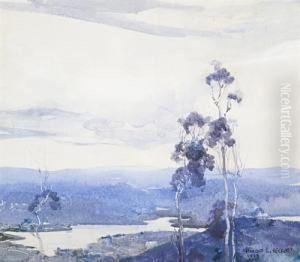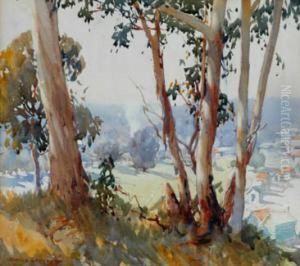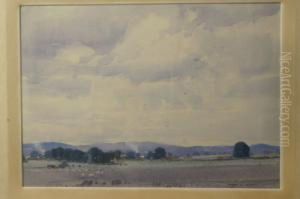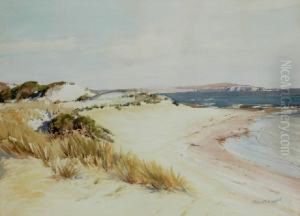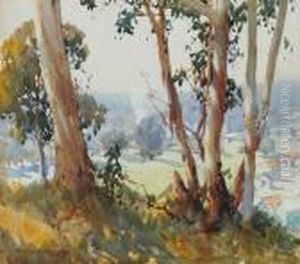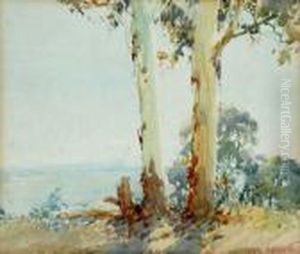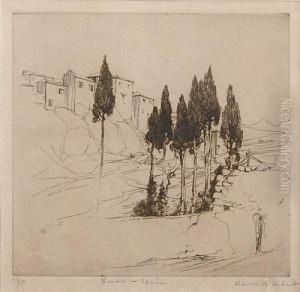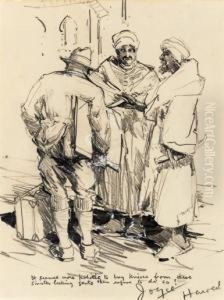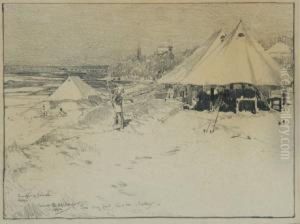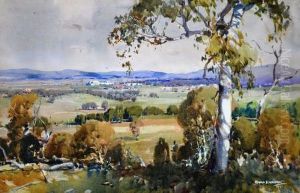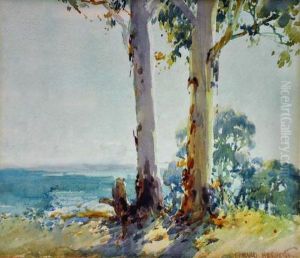Harold Brocklebank Herbert Paintings
Harold Brocklebank Herbert was an Australian artist renowned for his watercolor landscapes that depicted the Australian countryside. Born on 23 June 1891 in Ballarat, Victoria, Herbert showed artistic talent from an early age. He pursued his passion for art by studying at the National Gallery School in Melbourne from 1912 to 1917, where he was influenced by notable artists such as Frederick McCubbin and Bernard Hall.
Herbert's early work primarily involved oil paintings, but he gradually shifted his focus to watercolors, a medium in which he excelled and became best known. His landscapes are characterized by a delicate touch and a mastery of light and atmosphere, capturing the unique qualities of the Australian light and terrain.
During World War I, Herbert served in the Australian Imperial Force, an experience that influenced some of his later works. After the war, he continued to develop his artistic style and gained recognition for his contributions to Australian art. Herbert was a member of the Australian Watercolour Institute and also exhibited with the Victorian Artists Society and the Twenty Melbourne Painters, among other art societies.
Throughout his career, Herbert traveled extensively across Australia, seeking inspiration for his paintings. He was particularly drawn to the rural landscapes of Victoria and Tasmania, which became recurring subjects in his artworks. His ability to depict the tranquility and beauty of the Australian bush earned him a significant following, and his works were collected by major galleries and private collectors alike.
Harold Brocklebank Herbert's legacy lives on through his evocative watercolors that continue to be appreciated for their technical skill and their portrayal of the Australian landscape. He passed away on 6 September 1945 in Melbourne, leaving behind a body of work that remains influential in the canon of Australian landscape painting.
